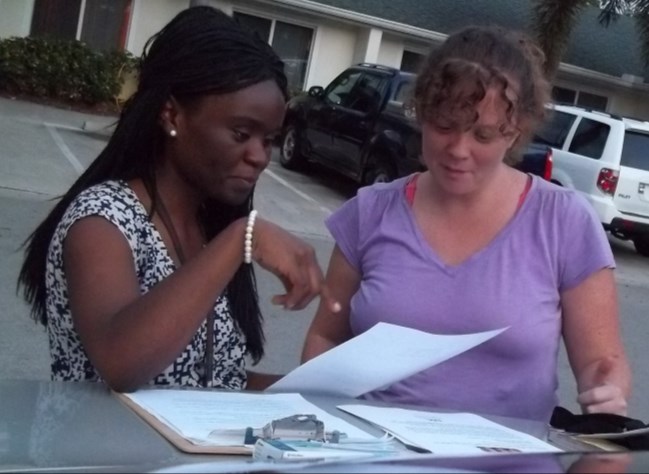By Michele Bolduc
>>This piece originally ran in the Rural Geography News (Spring 2015) - You can access it here.
I am a PhD candidate at the University of Kentucky interested in the changing geographies of health and health care in rural places. My dissertation looks at four interrelated aspects of women’s health care delivery (availability, provision, accessibility, and utilization) in Immokalee—a migrant farmworker town in southwest Florida. Many of you are probably familiar with Immokalee, which became the site of a successful farmworker campaign in the late 1990s to reverse declining wages for laborers by working to get better prices on tomatoes from fast food
corporations. Despite these successes and ongoing efforts to increase the standard of living in Immokalee, however, severe socio-economic
disparities continue to plague farmworkers and their families.
My research looks specifically at the persistence of health disparities amongst Haitian women in Immokalee. Using semi-structured interviews, I explore women’s experiences of care, their barriers to accessing the care they need, and their spatial patterns of service utilization. In addition, I am interviewing local health care providers on their experiences providing care to Haitian women within the context of the issues associated with rural health care (such as a lack of specialists) and the changes ushered in by the Affordable Care Act. With the
help of my wonderful research assistant, China Pierrelus--a HaitianAmerican community health student who has been helping with translation
and outreach as she prepares to attend medical school--I have been able to complete about half of the interviews I plan to do with Haitian immigrant women and their health care providers. However, I was recently awarded a (much-needed) NSF DDRI grant, which has allowed me to do additional interviews on the topic of prenatal care through the summer.
 Though I am only half way through the interviews, a few patterns in the data have already emerged. For example, most Haitian women have expressed that they face a number of financial barriers to obtaining quality care. Even the $20 required to be seen at the local community health center is often more than the women have to pay, considering the average family income of the women I have been interviewing is under $10,000 a year. Though most of these women would have benefited from an expansion of Medicaid under the ACA, Florida is one of the many states that refused to participate in the expansion. This means that many of the women I interviewed fall into the “donut hole” where they make too much money to qualify for the very limited Medicaid programs available in the state, but they also make too little money to qualify for a health insurance subsidy. In addition, many women have noted the lack of easy access to emergency/urgent care (an ongoing issue in many rural places). For the many women I have interviewed without access to a car, this means that they have to take two buses (a 2.5 - 3 hour process) to get to the nearest ER room in Naples.
Though I am only half way through the interviews, a few patterns in the data have already emerged. For example, most Haitian women have expressed that they face a number of financial barriers to obtaining quality care. Even the $20 required to be seen at the local community health center is often more than the women have to pay, considering the average family income of the women I have been interviewing is under $10,000 a year. Though most of these women would have benefited from an expansion of Medicaid under the ACA, Florida is one of the many states that refused to participate in the expansion. This means that many of the women I interviewed fall into the “donut hole” where they make too much money to qualify for the very limited Medicaid programs available in the state, but they also make too little money to qualify for a health insurance subsidy. In addition, many women have noted the lack of easy access to emergency/urgent care (an ongoing issue in many rural places). For the many women I have interviewed without access to a car, this means that they have to take two buses (a 2.5 - 3 hour process) to get to the nearest ER room in Naples.These initial findings (and more!) will be shared at the upcoming AAG meeting in Chicago, and at the American Public Health Association meeting in the fall. For additional information about the study, please feel free to contact me at Michele.Bolduc@uky.edu.
Photo: Bolduc (right) with Pierrelus
Photo: Bolduc (right) with Pierrelus


